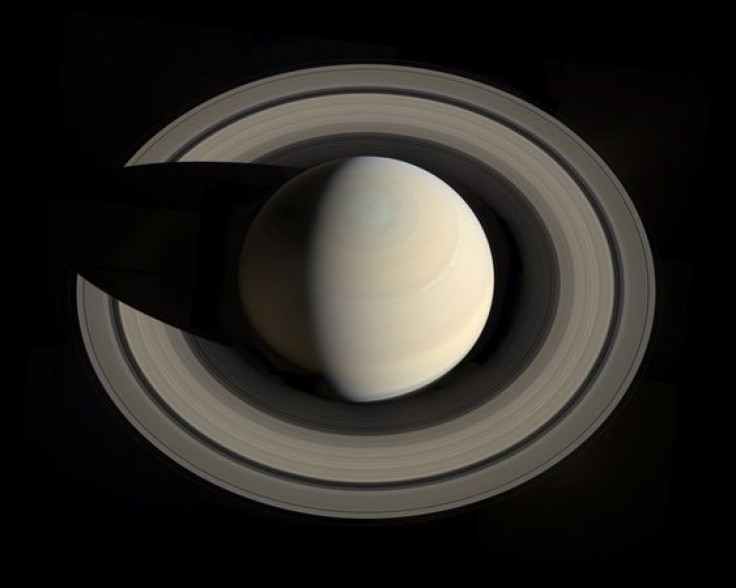Want NASA To Keep Exploring Saturn, Mars And Other Planets? Scientists Urge Public To Lobby Congress To #FundPlanetary

Maybe you marveled at some of those lovely, awe-inspiring images of Saturn taken by NASA’s Cassini spacecraft and would like to see some more? In that case, you better call your representative in Congress. Scientists are urging the public to lobby politicians to restore funding that would keep U.S. space missions like Cassini flying for years to come.
By all accounts, NASA has had a pretty good couple of years. The agency launched the MAVEN Mars orbiter this week, and neatly planted Curiosity on the Red Planet in 2012 with a never-before-used sky-crane landing technique. But that job performance isn’t being rewarded with a pay raise. The proposed 2014 budget for NASA drawn up by President Obama earlier this year includes more than $200 million in cuts to the space agency’s planetary science division. The proposal reduces NASA’s overall budget by only $50 million, but the planetary science division will be losing funds to other divisions within the space agency.
The proposed budget cuts “will strangle future missions and reverse a decade’s worth of investment building the world’s premier exploration program,” Bill Nye (yes, the “Science Guy”) wrote back in April on the blog of the Planetary Society, where he is CEO.
NASA’s planetary science cuts could stifle plans for Cassini’s last hurrah. While the craft’s primary mission was completed in 2008, Cassini has continued to study Saturn in detail since then. The spacecraft’s days are already numbered: By 2017 Cassini will have expended most of its fuel and is scheduled to make a swan dive right into Saturn’s rings. But before it goes, NASA scientists had hoped to take the spacecraft in a radical new direction -- bringing it closer to the rings and Saturn itself than Cassini has ever flown before. The price tag for this totally new mission? About $60 million to $65 million a year -- practically a pittance, when it comes to government spending.
“At one time, funding for Cassini's full extended mission to the end of 2017 had been approved. Then NASA's planetary budget was cut and now the mission has to seek approval again to continue operating,” Van Kane wrote at The Planetary Society’s blog. “I suspect that the Cassini team is scrubbing its budgets to look for ways to reduce costs and still enable the close up orbits at the end of the mission. That team has stated before, though, at a large portion of the budget goes to simply operating the spacecraft safely. Cuts would have to come from reducing science operations.”
The Planetary Society is urging citizens to write and call their representatives this week, asking them to restore the planetary science division’s funding to its historical average of $1.5 billion per year. Scientists and space enthusiasts of all ages have also taken up the call on social media, under the hashtag #FundPlanetary.
I wrote Congressfolk and will make a follow-up call today. I urge you, the planetary tweeps who follow me, to do the same. #FundPlanetary
— Andy Rivkin (@asrivkin) November 20, 2013For the non-scientists: I know you're out there. Many of you are space advocates or fans. You too have a big role you can play if you choose.
— Andy Rivkin (@asrivkin) November 20, 2013You follow astronauts here. You wave at Cassini. You hope ISON survives so you can see it with your kids. You marvel at Curiosity's latest.
— Andy Rivkin (@asrivkin) November 20, 2013We need you, too. From Oregon to Indiana to Louisiana to Kansas to wherever you are. Your voice counts in this democracy.
— Andy Rivkin (@asrivkin) November 20, 2013Restoring planetary science funding would also be the first step to getting intrepid robot explorers out to other worlds. NASA scientists have been itching to get to Europa, one of Jupiter’s moons, for ages. Researchers think that the icy Jovian satellite has a water ocean underneath its frozen surface, which would make it a prime candidate for harboring extraterrestrial life. But budget cutbacks have taken a Europa mission off the table.
Why #fundPlanetary? Because these worlds are crying out for exploration. pic.twitter.com/ZZdw7PibQ2
— Planetary Society (@exploreplanets) June 13, 2013© Copyright IBTimes 2024. All rights reserved.











